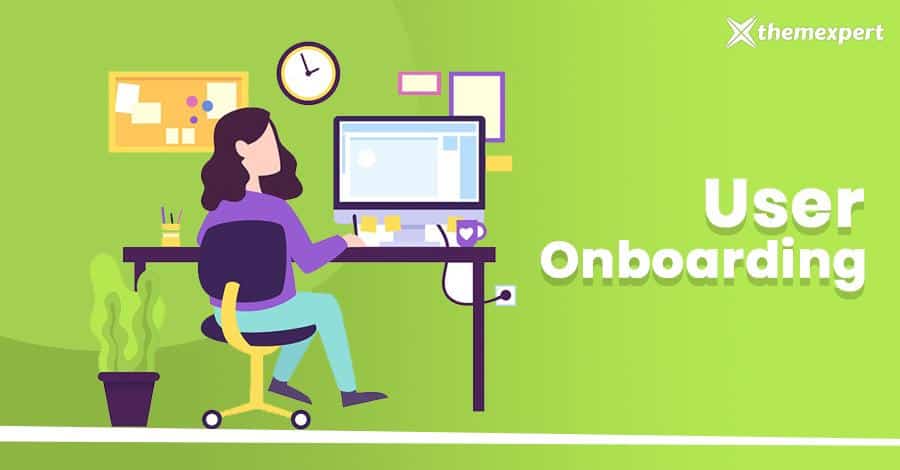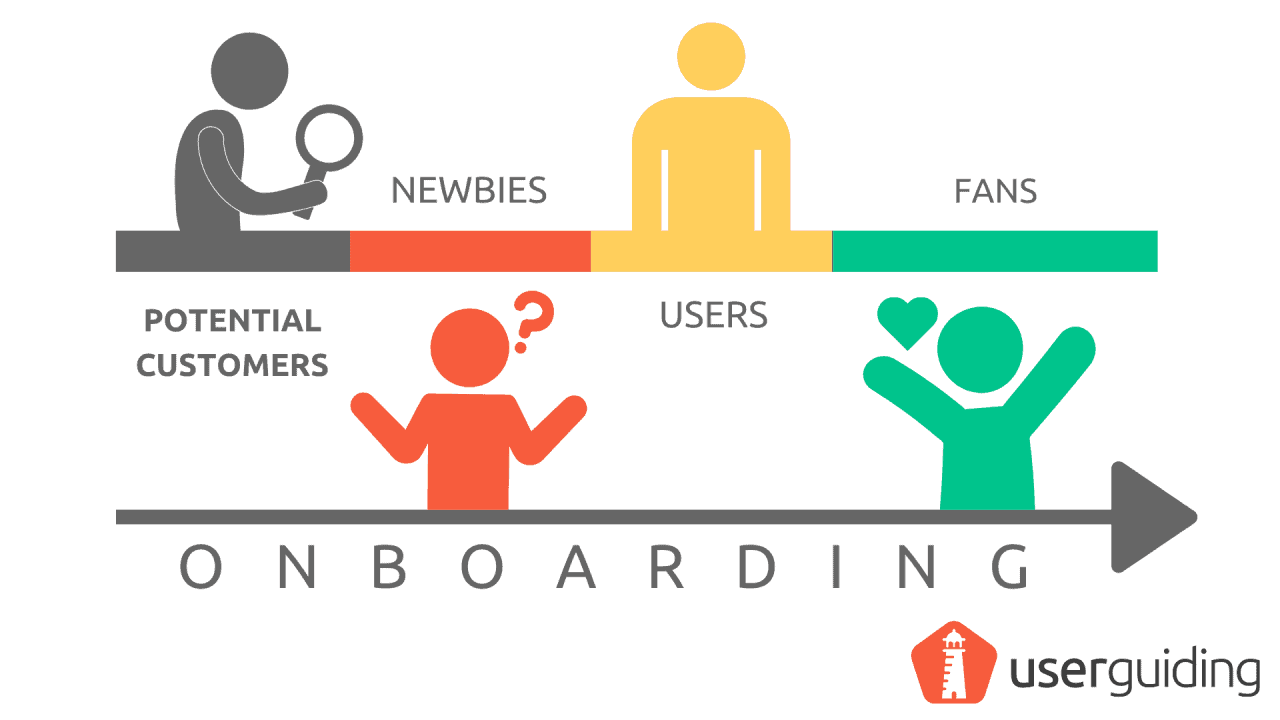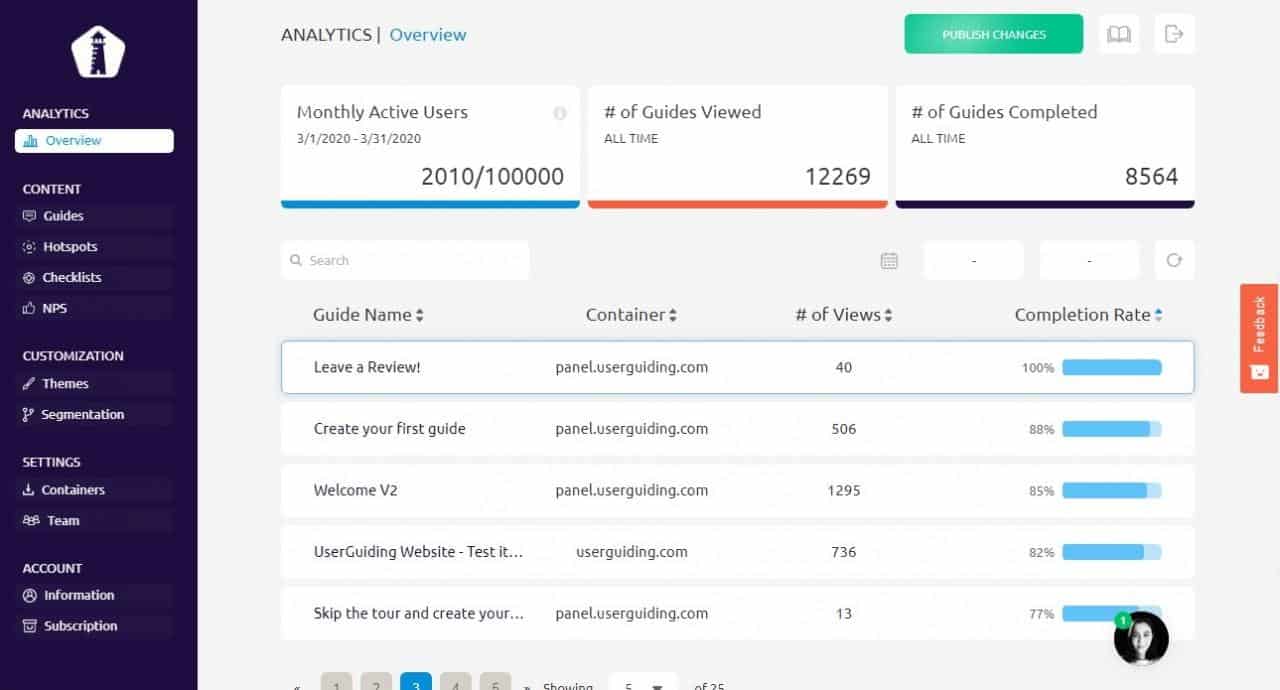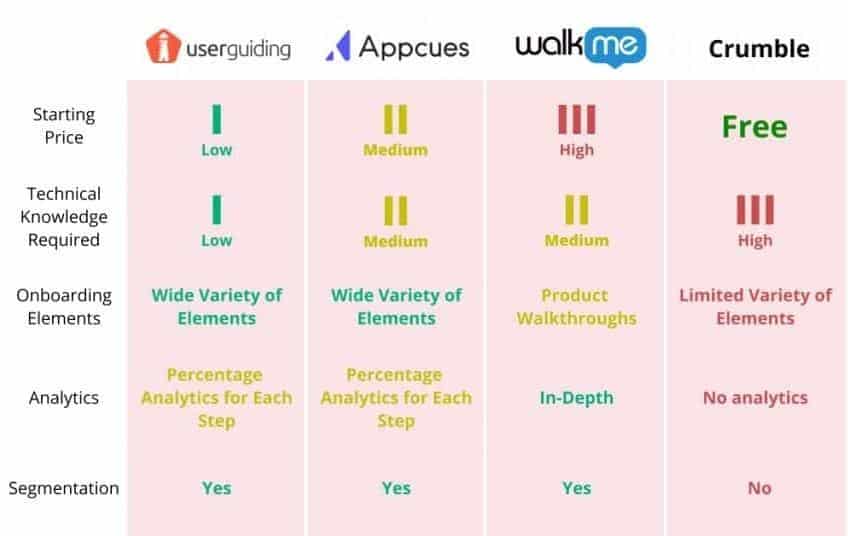The first time a user accesses your product or service is an important and fragile period in their journey. It can be either an average or below-avera...
The first time a user accesses your product or service is an important and fragile period in their journey. It can be either an average or below-average experience that doesn't do your business any favor, or it can be a great onboarding process that skyrockets your growth.
Which one will it be?
Totally up to you!
If you decide that you want the best onboarding possible, you just have to establish one and keep improving.I
n this article, I will cover everything I believe you should know to create flawless user onboarding flows.
What is User Onboarding?
User onboarding is the process during which you help your new users experience the actual value of your product or to get to a point where they see the value potential first-hand.
Since this is the stage your users realize they can truly benefit from your product – that this is their "Aha!" moment, you should figure out what has to happen to get them there, to get them on board.
Only then can you design this process and set them up for continued customer success. That means your user onboarding design requires particular features to effectively guide users from setup to experiencing their first "Aha!" moment.
Why User Onboarding Important?
User onboarding is your first chance to strike a great impression and turn a first-time user into a regular user, or even a fan of your product and your brand. And most of the time, it is not just the first, but also the best chance you are going to get.
An inefficient user onboarding flow can result in low retention and increased churn. Due to this inefficiency, some of your customers won't be able to reach their "Aha!" moments. They won't be aware of the value you offer. These customers are more likely to churn than stay.
Happy customers are a lot more prone to buying from you again and becoming loyal customers than unhappy ones. Loyal customers are a very valuable asset for your business. As mentioned above, acquiring a new customer is (much) more expensive than maintaining the one you already have.
User onboarding will help you in all those sectors.
How to Onboard New Users Effectively?
Now that you know what user onboarding is, it is time to discuss how it should be to achieve the best results.Optimizing and improving user onboarding should be added to website launching checklists of every business to draw the attention it deserves.
In order for you to improve your onboarding process today, here are 3 tips that I thought you should be aware of:
1. Straight to The Value
The main point of creating a user onboarding flow is to get users to their "Aha!" moments as quick as possible. In order to achieve great results with your onboarding, you must display your value proposition immediately, without stalling and boring users with unnecessary details.
This can only be possible by keeping the onboarding as short and as simple as possible. Make sure you only provide your users with the information necessary for them to understand the value you offer.
2. Personalize The Experience
Personalization makes customers more engaged and helps build strong relationships with them. You can start your users' journeys by asking them a several questions to understand what they want to achieve with your product, and guiding them accordingly.
Understanding every users' individual experience, how they reach their goals with your product and being responsive to their needs is at the core of the value proposition.
If you want to turn your user onboarding into your own growth hack, you must learn and use effective segmentation.
3. Analyze User Behavior, Collect Feedback and Improve
Your user onboarding process might seem flawless and perfect to you. But your opinion is not important, at least not in this situation. You must learn what your users think of your user onboarding, and act on the information you acquire to improve.
Achieving the thoughts of your users on your onboarding is simple, you can try two methods to do so. You can first use analytics and user behavior tools to understand what your users like about your guides and other onboarding elements, what their pain points are and what they enjoy when going through this onboarding process.
User Onboarding Tools
Another way to improve your onboarding process is to switch from in-source to third-party tools. These user onboarding tools come with a wide variety of onboarding elements that lets you create interactive reusable guides, tooltips, feature highlights, NPS surveys, and more. Also, most user onboarding tools do not require technical knowledge or coding skills.
If you have designed your business website without coding the next thing you might be looking for is probably a tool where you can create onboarding without any coding.
Let me introduce and compare the various user onboarding tools on the market:
UserGuiding
UserGuiding is a code-free user onboarding platform that offers a wide-variety of onboarding elements such as interactive product walkthroughs, user guides, onboarding checklists, feature highlights, in-app messages, and NPS surveys.
With no technical knowledge required, UserGuiding is the product for the companies who don't want to sacrifice a developer to a 3rd-party tool. You can start your free trial and easily create your first guide in minutes. It also offers affordable prices for businesses of every-size.
Appcues
Appcues is a pioneer of no-code user onboarding tools. They have put brand new onboarding elements to the market such as onboarding checklists and tooltips.
Although being a comprehensive tool that you can perfect your onboarding with, Appcues is more complex to use than its competitors. You won't need a solid technical background to use it, but according to its reviews, you will need time to adapt to it.
WalkMe
WalkMe is another user onboarding platform that has been around for a long time. They are also a completely code-free product that you can use to create perfect interactive product walkthroughs with.
Although their features are limited to product walkthroughs, big tech companies such as Microsoft and PayPal chose WalkMe as their onboarding solutions. WalkMe creates customized plans with custom prices for each of their customers, and their prices are higher than the industry average.
Crumble
Crumble is a free jquery plugin that helps you create simple product tours. It is convenient for small-sized companies who don't have the resources to use 3rd-party tools or to create onboarding processes in-source.
It requires basic coding knowledge and experience in open-source tools. The onboarding elements are limited to just bubbles but, what do you expect from a free product?
Comparison Table
To help you understand our comparisons better, here is a visual chart.
As you see, an efficient user onboarding is not a good-to-have anymore, it is a need that must be met! Like many other businesses, big to small-sized, you can trust 3rd-party onboarding tools as you work on creating and improving your onboarding flows.
With a great user onboarding up and running, you are more likely to convert new-comers into fans that are in love with your product and your company. Remember to keep your onboarding process short, interesting, and straight to the point for maximum effect.
Final Words
User onboarding is so crucial, and can have such an outsized snowball effect on growth; it allows you to unlock the inherent value of your product, and make it click for more users. Get the first few moments of your product right and your customers will stand by you, for weeks, months, and even years.
Let us know your any suggestions and queries through the comment box below. We would love to reply you.




